Issue #108: Paella Party!
A Recipe for the Iconic Paella Valenciana, Have a Listen to Architect David Rockwell
It’s great to be home and cooking again. The greenmarket is flush with beautiful produce. To that, add all of the wonderful ingredients and conservas I brought back from Spain, and you know we’ve been eating well. As promised, here is a recipe for my version of the iconic paella Valenciana. Once the prep is done, it’s really quite simple. And it’s an impressive crowd-pleaser of a dish.
Speaking of icons, this week on my What’s Burning podcast I’m joined by the award-winning architect David Rockwell, who has designed many of America’s most iconic restaurants. We talk about what makes a restaurant space both warm and workable and how our built environments can contribute or detract from our enjoyment of both food and hospitality. Have a listen.—Mitchell
As you know if you’ve been following along, I’m just back from Valencia, Spain, aka paella country. Since the Moors first brought rice cultivation to the Iberian peninsula some 1200 years ago, Valencia has been the rice capital of Spain. The city is surrounded by paddies, whence come the famous Albufera and Bomba short-grain varieties, among others. So, it stands to reason that Valencia is also ground zero for paella, which takes its name from the wide flat pan, la paella, in which it is made.
Last Saturday afternoon, strolling back to the center of town from Santiago Calatrava’s iconic Ciudad de las Artes y las Ciencias, I turned a corner to find a giant paella bubbling away over a wood fire set up in the middle of an intersection. It was a like a scene from a movie, complete with a musical score provided by a clarinetist. A makeshift beer garden had been erected off to the side where people were drinking and cavorting while they waited for the rice to cook. The scene seemed normal to everyone but me, just a typical Saturday afternoon in a Valencia neighborhood.
Rules, Rules, Rules
A few things I learned about this iconic dish. Paella is really only served at lunch, which in Spain is eaten almost as late as dinner is elsewhere. It took me some time to figure this out. My first night in Valencia I chose a restaurant for dinner with my cousin that was known for its local cuisine, Ca Pepico, just outside of town. I was excited to try my first paella Valenciana. But paella wasn’t on the menu. Nor were there any rice dishes on any of the tables nearby. I didn’t even ask, assuming I misread the recommendation. That night, back in our Airbnb, I clicked onto the restaurant’s Instagram account and it was full of lush photographs of beautiful paellas. WTF?! It wasn’t until a few days later when I learned from a friend that paella is really only served for lunch that I understood what was going on there. In fact, most of Valencia’s reputedly best paella restaurants (Casa Carmela, Alqueria el Borsquil, Arroceria Las Bairetas) are only open for lunch, from about 1 or 2 pm to 5 or 6 pm. Go figure.
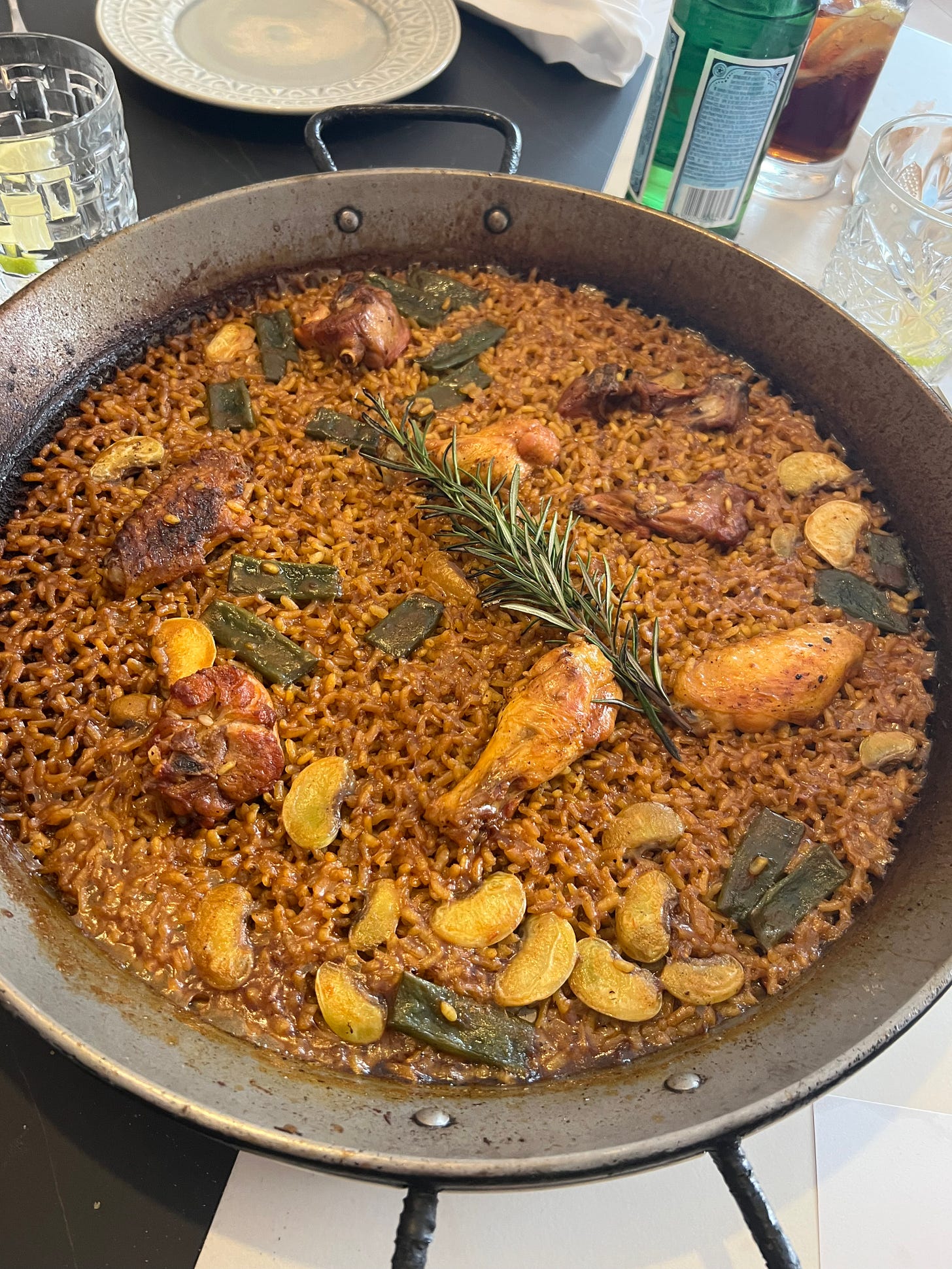
I also learned that paella Valenciana refers to a very specific version of the dish, one made with rabbit, rice, beans (two kinds, dried butter beans and wide, flat green beans), and sometimes snails, that’s cooked over a wood fire. It is not flush with seafood of all kinds, which we imagine it to be here. There is apparently never chorizo in paella. And if there is chorizo or anything besides the other ingredients I mentioned, the dish is referred to dismissively by Valencianos as arroz con cosas, or “rice with things.” I saw other paella-like dishes on menus referred to as arroz seco, that is, “dry rice.” When we ordered these dry rice dishes our servers corrected us if we referred to them as paellas. In food culture, there are rules, people!
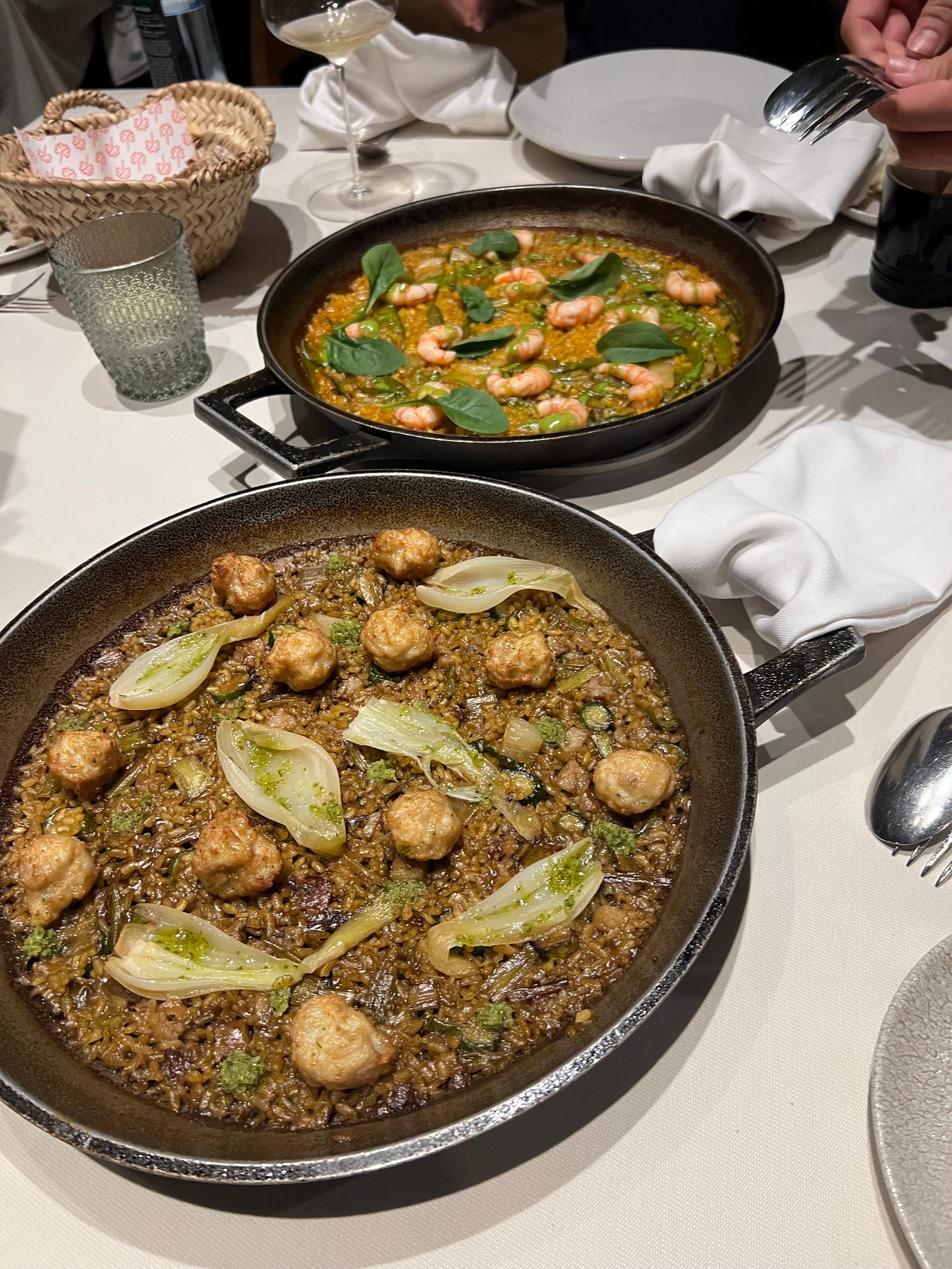
Another rule we encountered—let’s say, transgressed—is one that prescribes a table should only ever order just one paella, scaled to serve everyone. After finally finding a restaurant that would serve paella for dinner—the 125-year-old La Pepica on Valencia’s beach, not to be confused with Ca Pepico, where we couldn’t get a paella at night—we wanted to try a few different versions. Our waiter was befuddled. One table, one paella. We finally wore her down and after consultation with the kitchen, she let us order three different paellas: Valenciana, mariscos made black with squid ink, and fideos, which is almost exactly like a paella, but made with short noodles instead of rice.
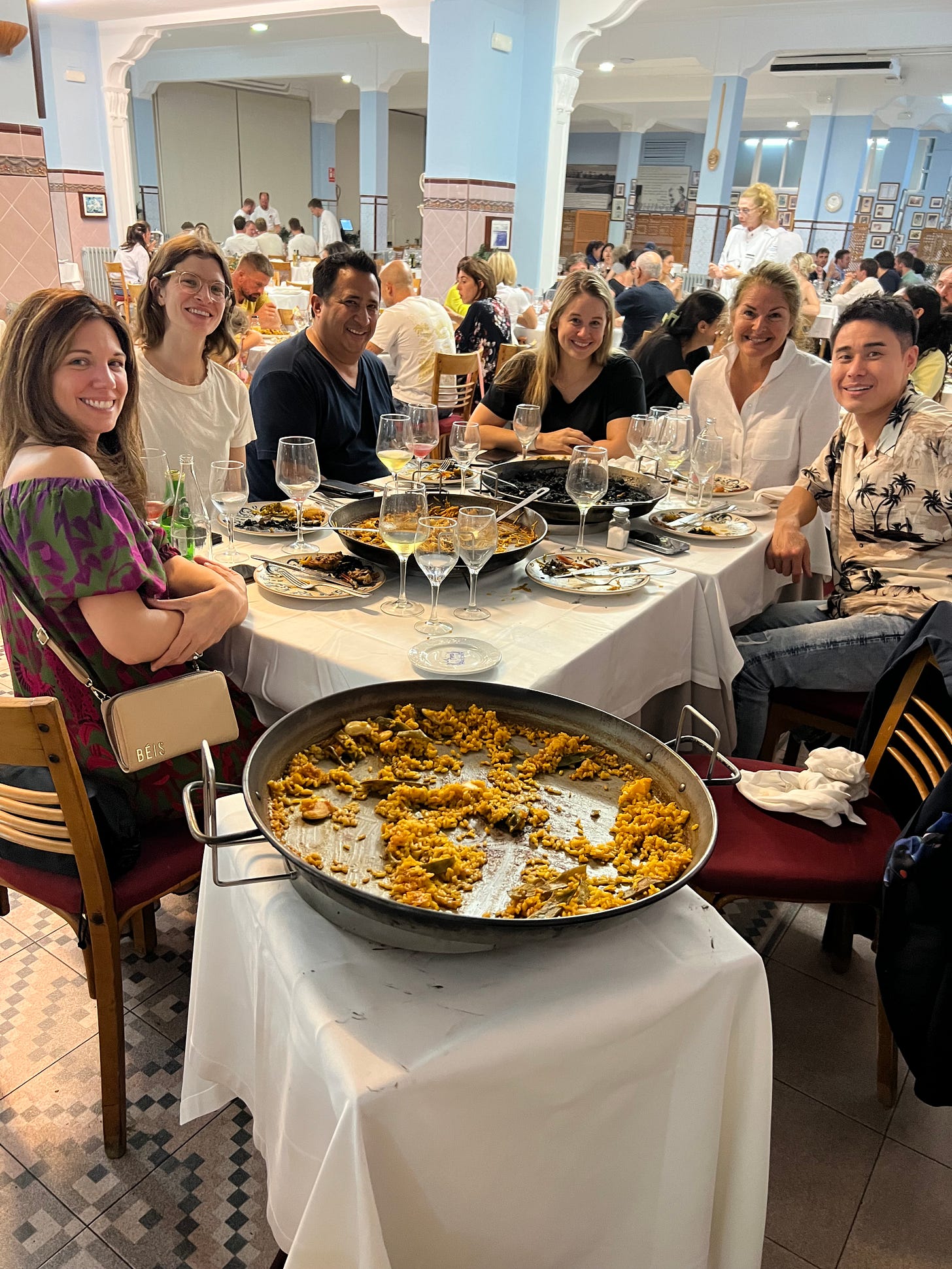
Hand-Carried Imports
Like many a tourist before me, I couldn’t resist bringing back a paella pan from Valencia, actually, two. One is large enough to make a paella for 6 or 8 people, and one is small enough for just me and Nate. I also brought back two kilos of Albufera rice and a kilo of alubia fabada, the large, white gigantes-style butter beans.
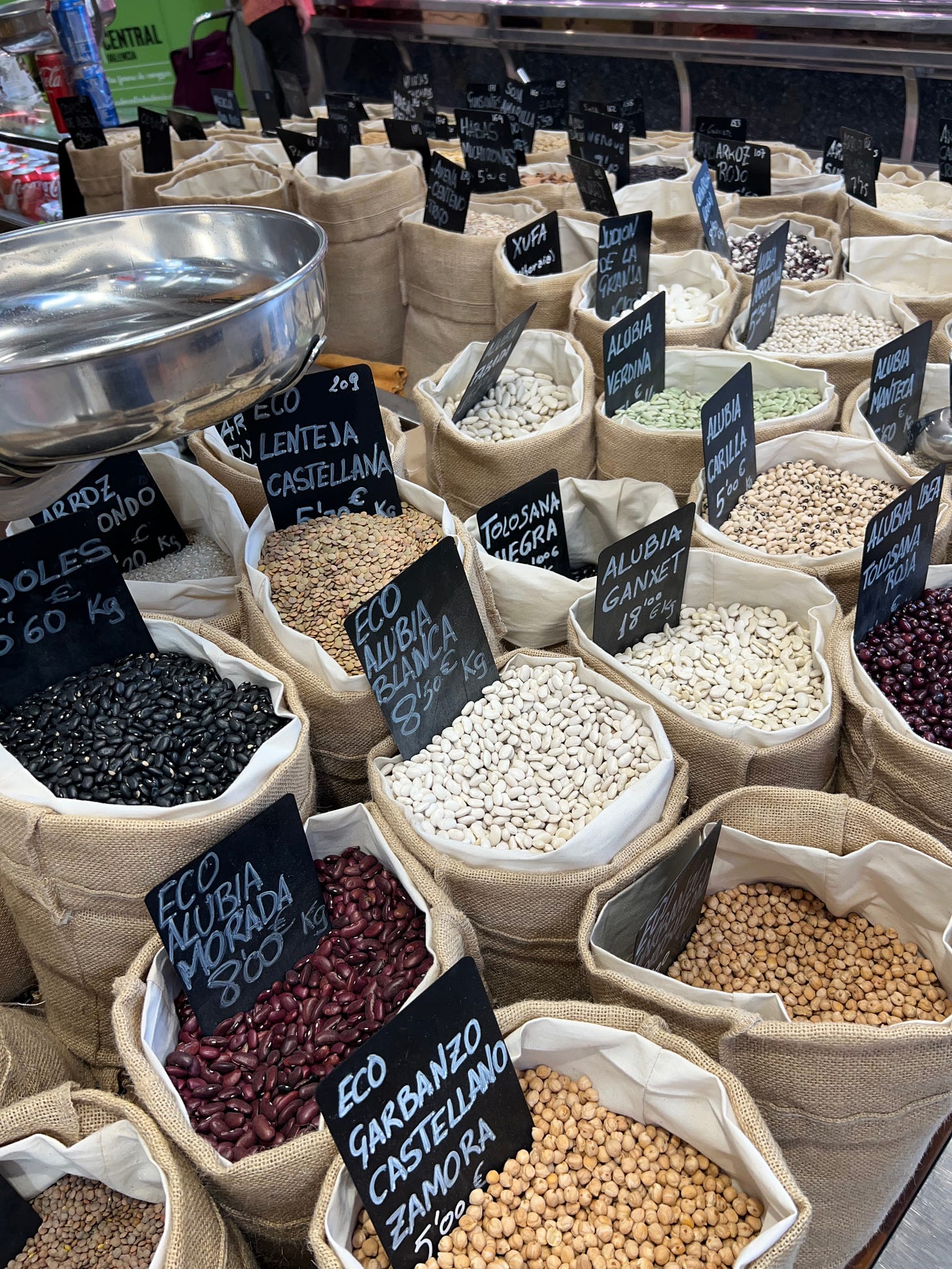
Back home I wanted to recreate a respectable version of paella Valenciana, keeping it simple because its roots lie in a humble workers’ dish intended to be both satisfying and sustaining. The most difficult part was finding a rabbit, which I was intent on, but which you can totally forgo for more chicken. It behooves you to find a good Spanish rice, which behaves differently from Italian short-grain rice intended for risotto. For paella, you do not want the rice to give up any of its starch and once added, you will not stir the pan much at all. You can use any large, white butter bean—I love the Greek gigantes beans—but they have to be soaked and cooked in advance. As for the green beans, long, flat Romano beans are perfect. Just cut them into 1 ½- to 2-inch pieces. I used a combination of chicken and vegetable stock for the liquid, but water is even more traditional. No shame in using it, instead.
Once everything is in the pan, you let the paella simmer away until almost all of the liquid is either absorbed by the rice or evaporated, and then a dark, caramel crust forms on the bottom of the pan. You may think you’ve burned it, but this is the prized socarrat that is part of the enjoyment of paella eating. It’s important to let the paella sit for a few minutes after cooking before serving, which helps everything settle down and loosens the socarrat so you can scrape it onto people’s plates.
RECIPE: Paella Valenciana
(Servies 6)
1 pound (about 4) small chicken thighs, cut in half through the bone
1 pound (about 4) rabbit legs, the larger hind legs cut into pieces, or 1 pound chicken wings, separated at the joint
1 clove garlic, smashed
1 teaspoon sweet pimentón (smoked paprika)
Juice of ½ lemon
Kosher salt
3 tablespoons extra-virgin olive oil
1 cup cooked butter beans
¼ pound Romano green beans, ends trimmed, cut into 1 ½ ” to 2” pieces (about 1 cup)
1 large ripe tomato, grated on a box grater, or 3 canned tomatoes, crushed
Large pinch saffron
1 large sprig rosemary
6 to 7 cups chicken stock, vegetable stock, or water
2 cups Albufera, Bomba, or other Spanish short-grain paella rice
Place the chicken and rabbit, if using, into separate resealable plastic bags and divide the garlic, pimentón, and the lemon juice between them. Add a pinch of salt to each. Seal the bag, massage the meat to evenly distribute the seasonings, and refrigerate for at least an hour or up to a day.
About 30 minutes before you intend to serve the paella, set at 15” paella pan or other large sauté pan over a strong burner. Heat the olive oil with a pinch of salt. Add the marinated chicken, and fry, turning frequently, until nicely browned and seared on all sides. Move the pieces to the edges of the pan. Repeat with the rabbit or additional chicken. Add the butter beans to the center of the pan, season with a pinch of salt, and cook a few minutes, turning, until nicely browned. Move them to the edges of the pan with the meat. Now add the green Romano beans, season with a pinch of salt, and cook until they just begin to soften. Move to the edges of the pan. (If the pan is too crowded, you can remove some of these ingredients to a separate plate.)
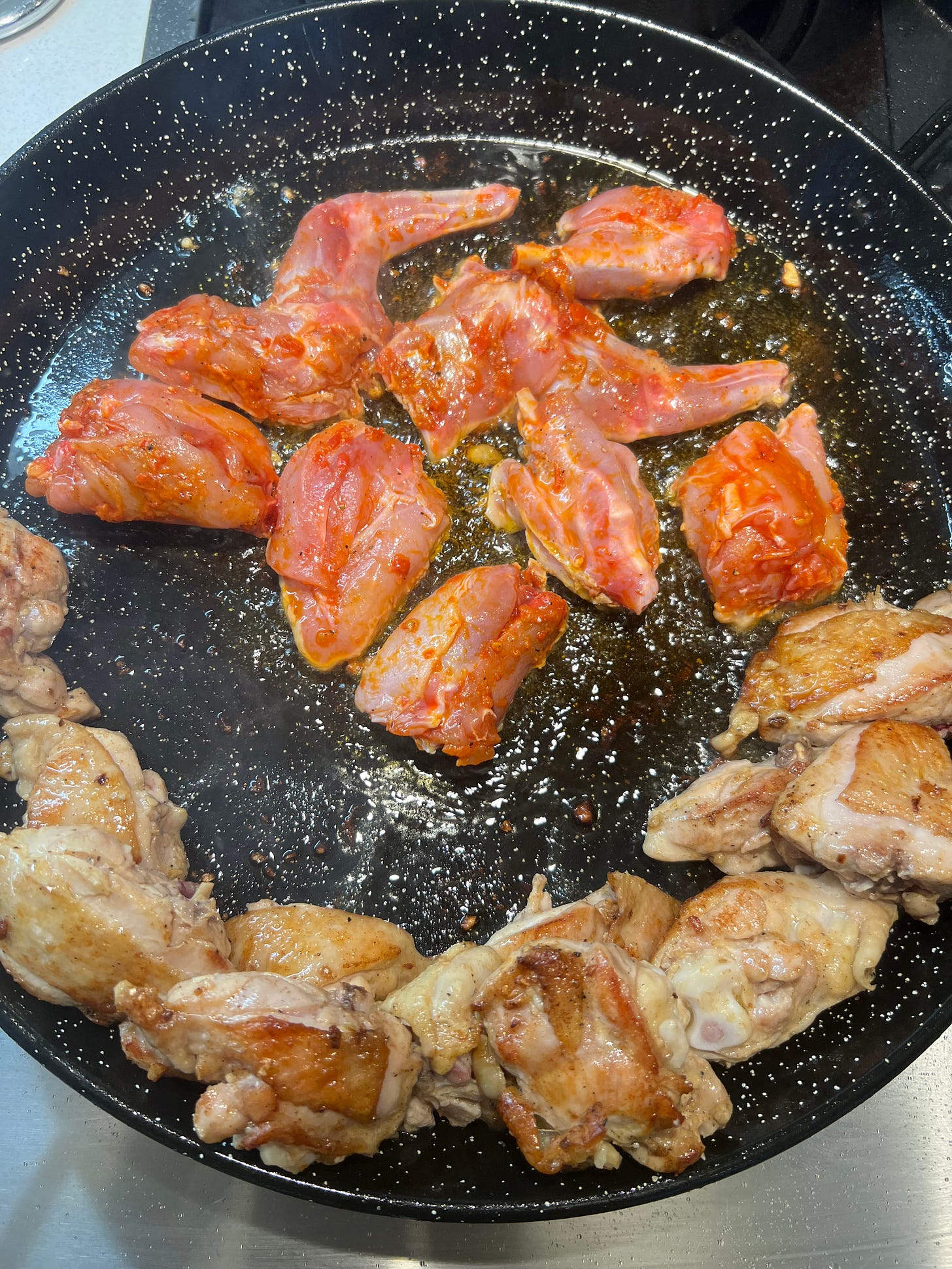
Add the grated or crushed tomato to the center of the pan, add a pinch of salt, and cook for a few minutes, stirring frequently, until the liquid is reduced and it takes on a deep red, almost caramel color. Stir in a large pinch of saffron and add the rosemary to the pan. Add 6 cups of the stock and bring to a boil. Simmer for 2 or 3 minutes, then remove the rosemary (but keep it nearby). Add the rice and evenly distribute it around the pan. Move the meat and beans from the edges of the pan to evenly distribute them, as well. If you’ve transferred anything from a separate plate, return to the pan, along with any juices that have accumulated.
Once the rice begins to simmer, turn down the heat to medium and let cook until almost all of the liquid has been either absorbed or evaporated, about 12 to 14 minutes or so. Taste the rice for texture and seasoning. It should be cooked through but still slightly al dente. Add salt if, needed, and if the rice is still tough and the liquid is almost gone, add the remaining stock. Once the paella is just about dry and the rice is cooked, turn up the heat to high for 1 or 2 minutes to create the dark socarrat on the bottom. Then remove the pan from the burner and let sit for about 5 minutes for the paella to settle and the crust to loosen. Return the rosemary sprig as a garnish (which I forgot to do in the one pictured above) and serve the paella directly from the pan, scraping the bottom so provide everyone with a little of the socarrat to enjoy.
Just a Few Days Left
There are just a few days left to take advanced of our 100th Issue Special Offer, that is, a discounted annual subscription rate ($45) and a free, signed copy of my Kitchen Sense cookbook. Click below to sign up now.



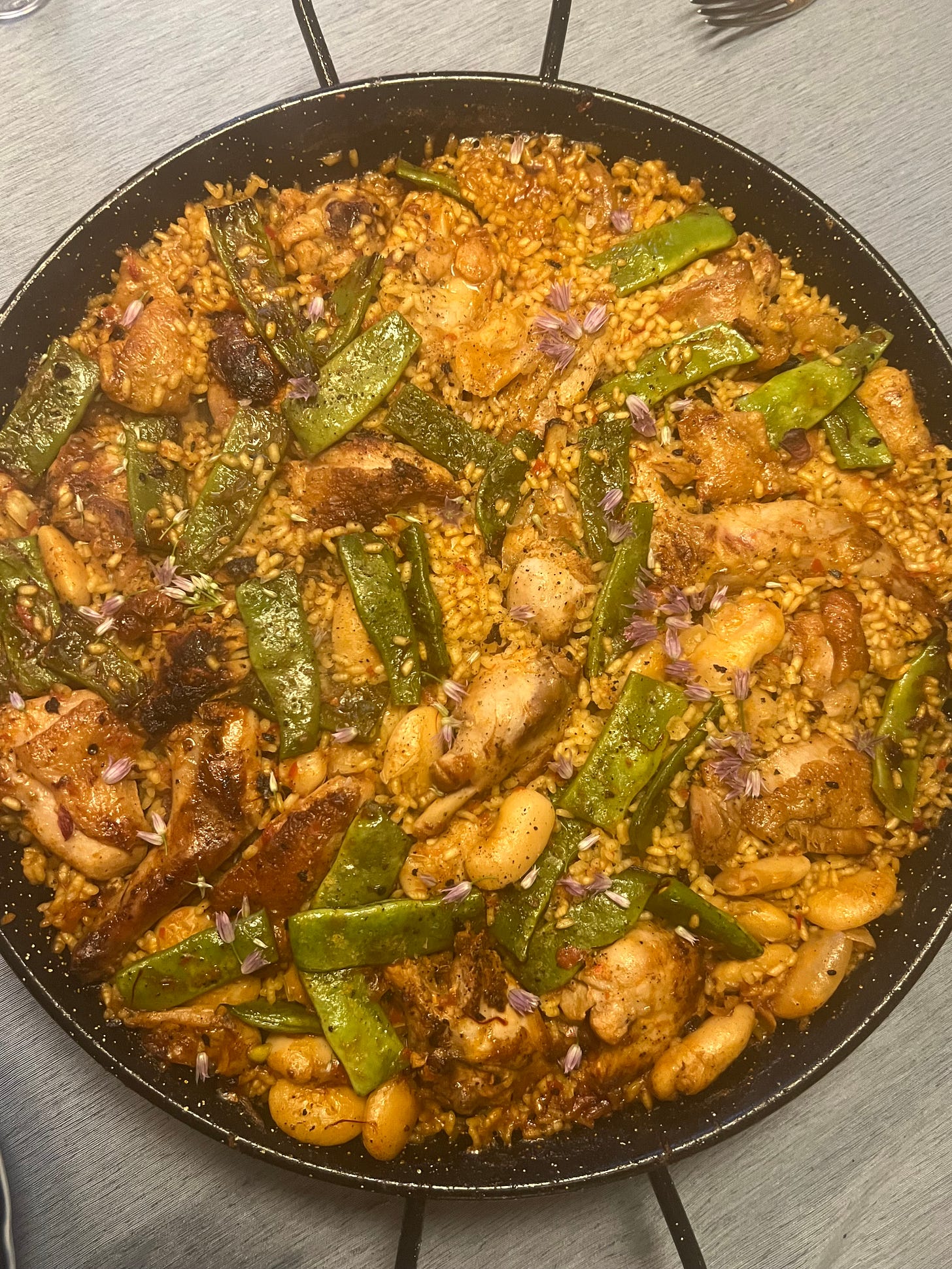
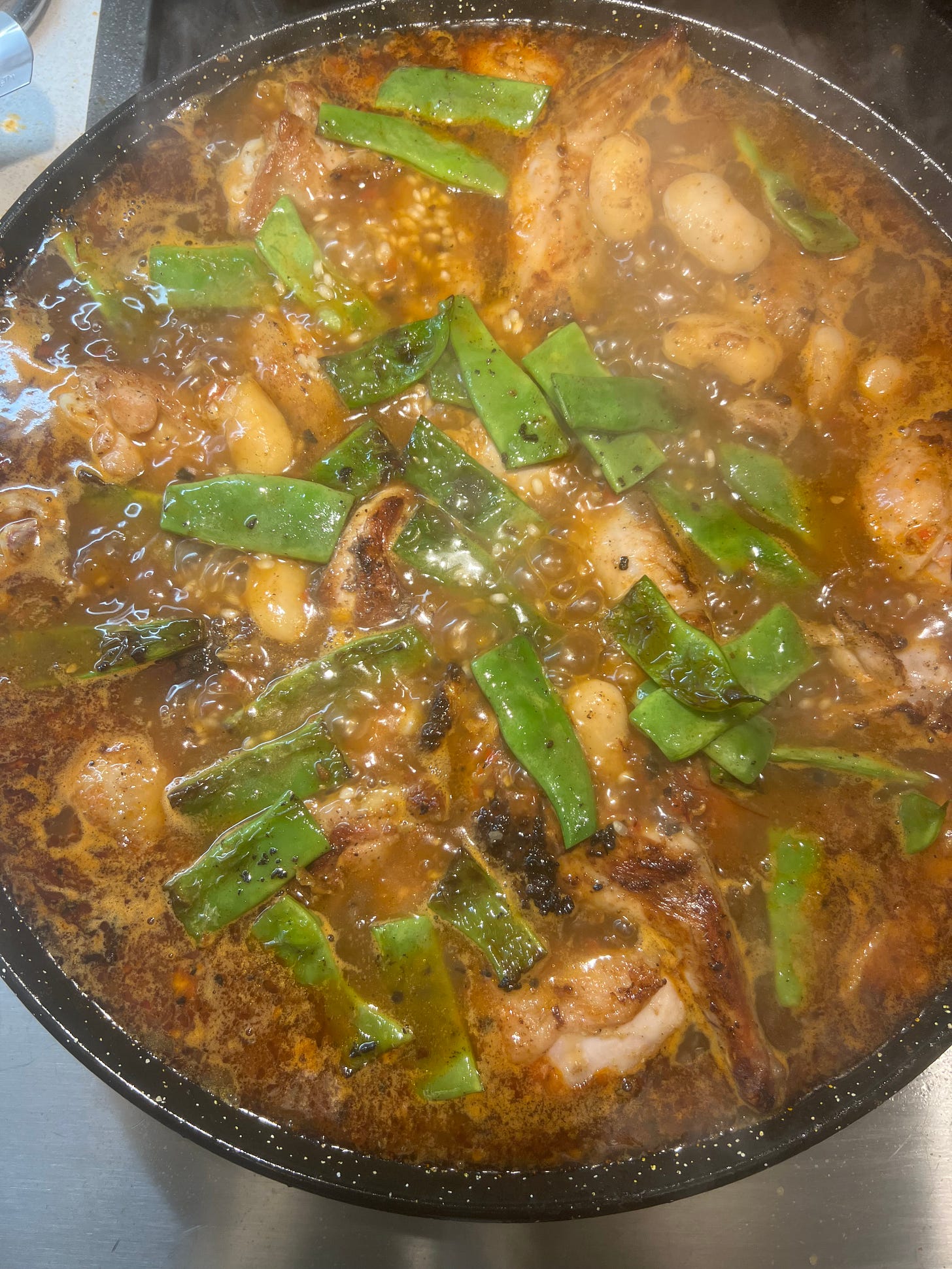

Great description, and I will use your article for the Oxford Food Symposium which is all about food rules. As always you are prescient.